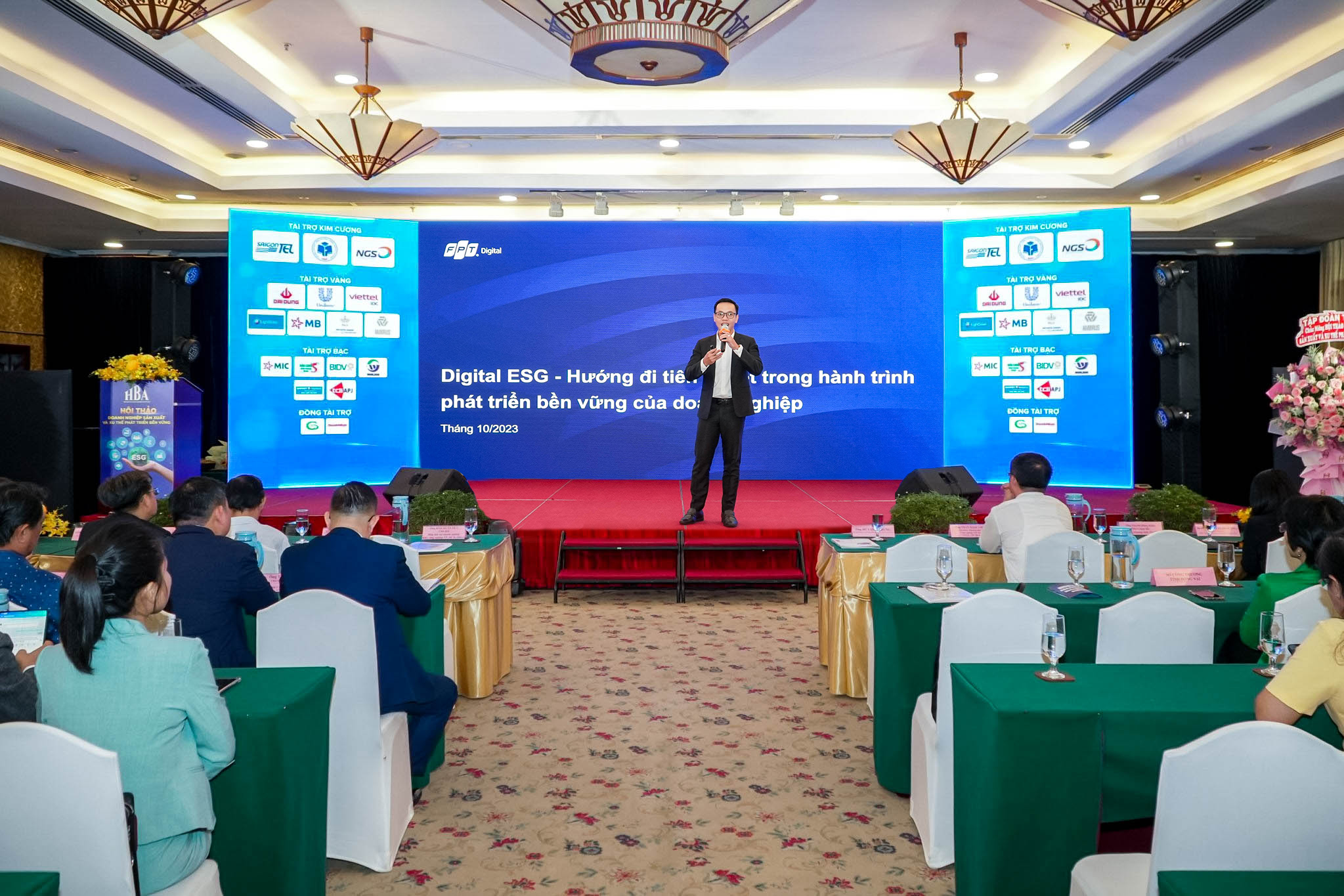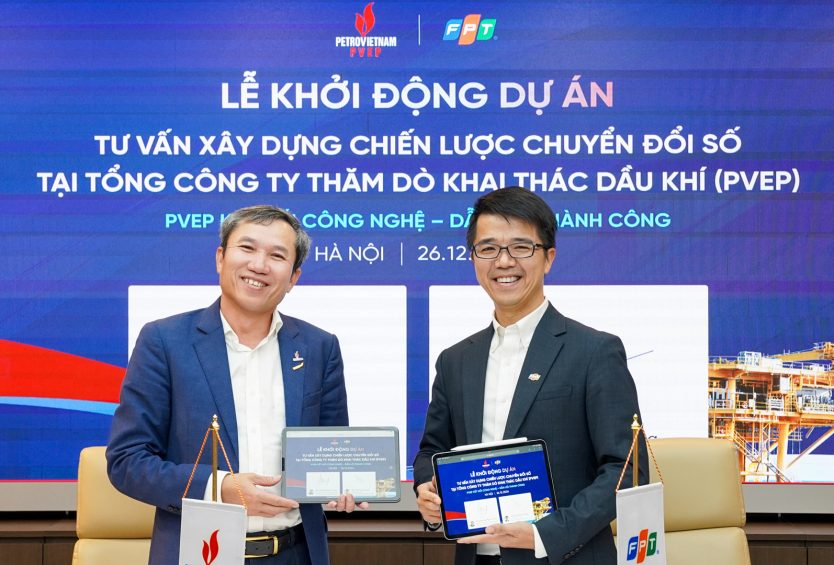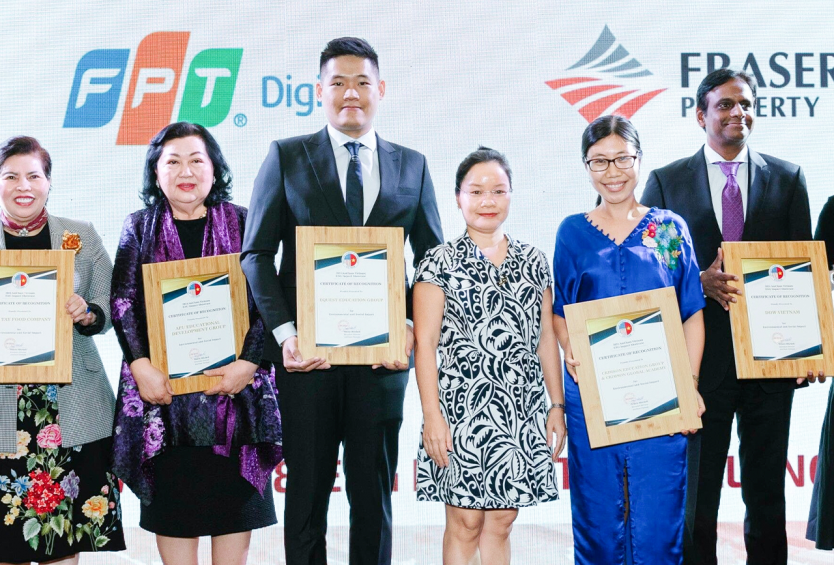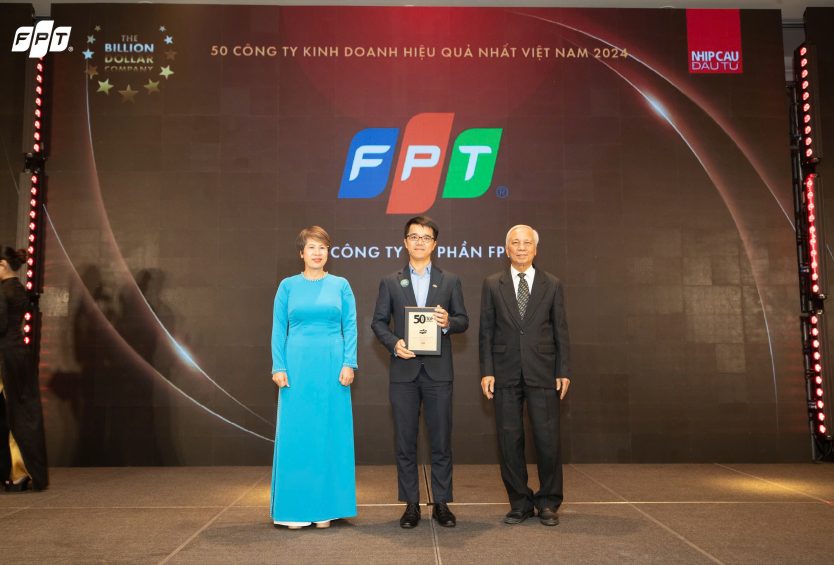To achieve success in the integrated journey of digital transformation strategy (DXS) and green transformation strategy (GTS), human engagement remains the foremost and pivotal factor, encapsulated by three key “P” elements. According to FPT Digital’s DXS consultant, the three “P” elements represent People – Leadership, People – Mindset, and People – Culture.
GTS is an imperative trend for businesses aspiring to participate in the global market.
Companies worldwide collaborate with governments to drive sustainable development, green economy, and circular economy initiatives, not only to meet climate adaptation requirements but also to enhance their ability to seize financial opportunities in the era of groundbreaking technological advancements.
Therefore, companies inherently need to align themselves with ESG (Environmental, Social, and Corporate Governance) objectives, encompassing environmental protection, social development, and enhanced governance.
Global markets, particularly in Europe, impose various demands on exported products, including high technological content, value-added production and processing, green and circular goods, and environmentally friendly and climate-conscious commodities,…
To effectively leverage the tax advantages offered by agreements such as the European Union – Vietnam Free Trade Agreement (EVFTA) or the Free Trade Agreement between Vietnam and the United Kingdom and Northern Ireland (UKVFTA), Vietnamese businesses need to focus on ESG factors.

According to FPT Digital’s report “Green Transformation – Towards a Sustainable Future” released in Q3/2023, the environmental pillar within ESG, reflecting how companies manage and minimize their operational impacts on the environment, takes precedence as the top priority for businesses worldwide.
The report indicates that up to 80% of companies have plans to increase investments in sustainability, and 60% of them consider ESG as a key criterion in selecting and prioritizing digital transformation initiatives. Developing businesses in line with ESG principles brings multifaceted benefits and values encompassing economic, environmental, and social aspects.
Research reveals that 50% of consumers are willing to pay a premium for sustainable consumer products, contributing to environmental protection. Moreover, 61% of sustainable development companies achieve higher net profits compared to their industry peers.
Green Transformation (GT) roadmap is a mandatory trend for companies seeking to participate in the global market. In Vietnam, the GT trend, also known as the shift towards sustainable economic growth independent of fossil fuels and excessive consumption of natural resources, is actively being researched and implemented by companies. This entails transitioning to a circular economy, developing green human resources, adopting renewable energy, and embracing green technologies.
However, integrating ESG objectives into business development and DXS strategy poses a significant challenge. Companies need to adopt the appropriate approach, specific implementation plans, and effective control mechanisms to facilitate this transformation.
According to Mr. Nguyen The Phuong, FPT Digital’s DXS consultant, this requires a careful evaluation of ESG objectives in conjunction with business development strategies, while exploring appropriate digital solutions to support their realization.
This represents the “dual transformation challenge” that companies must overcome to achieve business growth. It involves both DXS and GTS, aiming to increase revenue and profitability while ensuring compliance with ESG factors.
Based on observations from consultancy projects and discussions with companies during workshops, experts from FPT Digital have noted a relatively low level of understanding regarding the dual transformation concept.
Addressing the “dual transformation challenge”
During the dual transformation journey, Vietnamese companies have advantages due to government policies and directions outlined in the National Digital Transformation Program until 2025, with a vision towards 2030, as well as Vietnam’s strong commitment to climate change mitigation and the net-zero target by 2050.
However, Mr. Nguyen The Phuong mentioned that Vietnam currently ranks 111th out of 183 countries in terms of the Information Technology Opportunity Index (ITOI) and 126th out of 181 countries in terms of the Digital Opportunity Index (DOI). Additionally, Vietnam’s digital maturity level is classified as “Starting,” which is considered “very low,” and 34% of companies have no ESG program at all.

Due to a lack of deep understanding of Corporate Sustainable Development (CSD) and Corporate Sustainable Transformation (CST), the quickest way for Vietnamese businesses to grasp the concept of “dual transformation” is for the government to enhance information support through policies, regulations, specific supporting tools, and direct benefits from macroeconomic management policies regarding DX and GT.
Furthermore, Mr. Nguyen The Phuong believed that each business must assess risks and business opportunities based on the integration of Environmental, Social, and Governance (ESG) principles into their DX strategy, thereby enhancing operational efficiency and approaching a state of sustainable development. Throughout this transformation process, businesses must continuously evaluate suitability and make necessary flexible changes.
“DX acts as a bridge to realizing ESG goals while simultaneously pursuing the business development objectives of the company,” emphasized Mr. Nguyen The Phuong. In the report “Green Transformation – Towards a Sustainable Future” by FPT Digital, a five-step dual transformation roadmap for businesses is outlined.
The first step is to study the context and establish a vision, in which businesses need to clearly identify key leading agents for the development process and sustainable integration in the industry, as well as the current operational efficiency of the company.
In this step, businesses need to pay attention to issues such as evaluating the results of implementing sustainable strategies and management, identifying carbon emissions risks, benchmarking for improvement measurement, evaluating leadership team capacity, and raising awareness of sustainable development through training.
The second step is to develop a strategy and implementation plan. Businesses need to integrate sustainability into their business strategies and measurable development goals to ensure accurate reflection of commitments to DX objectives.
Orientation and planning include analyzing the gap between the present and expected future, determining the objectives to be achieved, building and managing sustainable investment portfolios, and ultimately transitioning to business models that apply digital technology.
The third step is to take action, leveraging sustainable development requirements as criteria for identifying and controlling risks. Particularly, businesses need to identify negative impacts on the environment, ensure optimal implementation plans that, on one hand, meet the rights of stakeholders and, on the other hand, select clean technology solutions to reduce carbon emissions and attract additional green financial investments.
The fourth step is monitoring, measuring, and reporting. This means that sustainable development strategies and business objectives must be continuously monitored, results recorded, and flexible adjustments made when necessary.
Finally, the fifth step is improvement, self-learning, and development. Businesses accumulate knowledge, enhance and develop production and business capabilities from both successes and failures during the dual transformation process.
Vietnam has taken initial foundational actions to catch up with the global trend of GT, although it still faces numerous challenges. To build sustainability as a competitive advantage, businesses must integrate ESG into their business strategies based on the foundation of DX strategies from the outset.
“Business strategy – DX strategy – Green transformation strategy” must be the three-legged support for businesses to stand firm, develop, and reach international standards,” stated Mr. Nguyen The Phuong.
To succeed in the integration of DX and GT strategies, serving the development goals of businesses, people always remain the top priority, with three key “P” elements:
People – Leadership, which demonstrates the mindset and commitment of leaders;
People – Mindset, which reflects the mindset and commitment of the team; People – Culture, which represents the organizational culture of DX, built upon three main factors: flexible culture (agile), data culture, and collaborative culture.
In conclusion, the crucial aspect of DX and GT is the transformation of human mindset. Therefore, businesses need to prioritize the impact on this factor through continuous training and extensive communication, helping to develop a digital workforce that can adapt throughout the transformation process.





